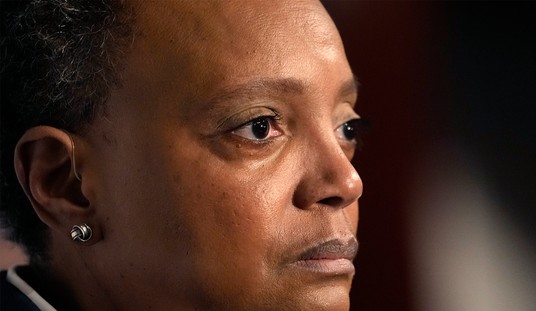Common law, case law, moves slowly. It basically crowd-sources notions of fairness and justice over time and turns them into rules. Normally this works well. But when the assumptions that informed the common law were faulty, then precedent drags positive change.
We can see this happening in child custody arrangements. The precedents set in the 1970s when the divorce rate rose were informed by Freudian attachment-theory studies in the post-war era on orphans, as they were the most commonly found victims of fractured families. As attachment theory developed, psychologists started studying mothers and young children. It seemed a logical first layer of detail to examine given the expectations that women took care of the children while men worked outside the home.
When the divorce rate rose in the ’70s and courts had to start declaring custody arrangements, the experts recommended primary mother care because they didn’t have data for anything else. From a 1992 “Origins of Attachment Theory” paper in Developmental Psychology:
Although we have made progress in examining mother-child attachment, much work needs to be done with respect to studying attachment in the microsystem of family relationships (Bronfenbrenner, 1979). Despite studies by Belsky, Gilstrap, and Rovine (1984), Lamb (1978), and Parke and Tinsley (1987) that show fathers to be competent, if sometimes less than fully participant attachment figures, we still have much to learn regarding father attachment.
Formal studies of children in broken homes didn’t really start until the ’80s when there were children of divorce to study and a fierce need for relevant data. And the father and child arrangements that the data recommend look little like the modern arrangements formed under the inertia of legal precedent.
1. The Father and Child Reunion, 2001
Studying the effects of family fracture on children takes time. Once the studies started, it was the late 1990s before there was a body of research on various angles. Warren Farrell spent years researching for his book Father and Child Reunion. It is loaded with findings still unknown to or resisted by the public. (For why, see next study.)
In fact, he explained the original research on a strangely-still-contentious topic that went viral just last week: the statistically safest place for women and children is in the marital home. From Chapter 3: “Are Dads More Likely to Abuse?”:
Question: The most common family characteristic predicting a battered baby is:
* poverty
* mother as head of household
* illegitimacy
* father as head of household
* none of the above
Answer: Mother as head of household.…Why? Domestic violence, as I document in Women Can’t Hear What Men Don’t Say, is a momentary act of power designed to compensate for a continuing experience of powerlessness. Which is why adult women abuse adult men as often as the other way around and why single mother households account for 43% or all abused children.
The book is full of facts that can aggravate the conventional wisdom. “Almost 2/3rds of the parents who kill their children are mothers.” “Children are more than twice as likely to be victims of neglect by their mother than by their father.” Although, the Amazon cover summary might pack the biggest punch [this time, emphasis mine]:
Specifically, Dr. Farrell’s findings suggest the following ranking as best for children:
(1) the intact family;
(2) joint physical custody, shared parenting;
(3) primary father time;
(4) primary mother time.
So if this data have been known since 2001, why isn’t shared parenting the norm for fractured families? Or paternal custody preferred over maternal custody, especially given modern women’s career ambitions? If the data showed fathers were so valuable, then why haven’t feminists been using it when pressuring fathers to participate in childrearing more. Was Farrell’s analysis wrong?
2. The Warshak study: “Social Science and Parenting Plans for Young Children: A Consensus Report” 2014
From the press release in February of this year: [emphasis mine]
Dr. Richard Warshak, Clinical Professor of Psychiatry at the University of Texas Southwestern Medical Center in Dallas, spent two years reviewing and analyzing the relevant scientific literature. His conclusions garnered the endorsement of 110 of the world’s top experts. “Just as we encourage shared parenting in two-parent homes,” Warshak said, “the evidence shows that shared parenting should be the norm for children of all ages, including sharing the overnight care for very young children.” …Warshak, referencing accepted research of the past 45 years, objects to the idea that children under four, and some say under six, need to spend nearly all their time with only one parent and cannot handle being apart from that parent even if they receive loving and attentive care from the other parent. Prohibitions or warnings against infants and toddlers spending overnight time in their father’s care are inconsistent with our current understanding of child development[.]
If the Warshak study basically confirms or is at least consistent with many of the findings Farrell brought to our attention over a decade earlier, what happened in the aughts? Why isn’t shared parenting the standard? For that answer, we need to look to Australia.
Prompted by the early studies covered in Father and Child Reunion, governments did start considering shared parenting. In 2006, Australia took the lead and passed a shared-parenting law directing courts to consider equal custody time. But shared parenting isn’t popular among some political groups, notably bar associations and feminists. Bar associations thrive on conflict that earns attorneys’ fees and, according to the data, shared parenting correlates with less post-split conflict among parents. (If each knows they have to make compromises for the children, then they do. Post-split conflict is highest in sole-custody arrangements. See page 7 at link.)
As for feminists, that is a puzzle. Even while women clamor for more paternal involvement in domestic chores and childrearing, political feminists refuse to accept shared parenting, typically alluding to concerns about father violence and insisting that women know best about children. (Whenever I see reports of men who don’t do childrearing chores, I usually wonder if his female partner allows him to do the chores.)
When the Julia Gillard government began in 2010, some Australian feminists pushed back against the 2006 law about shared parenting. Jennifer McIntosh, a clinical and developmental psychologist and vocal opponent of shared parenting, engaged in a campaign of misleading the public about the Australian experience. She did not object as her unsound analysis echoed though the media and stifled efforts to bolster father participation in broken homes in the UK, Canada, and U.S. Because of arguments using the Australian experience, only a small handful of U.S. states have passed shared-parenting provisions. Canada voted down a shared parenting law about a week ago.
(According to Ned Holstein of the National Parents Organization, social conservatives haven’t fought against shared-parenting concepts—it was the Howard government in Australia that passed the reform, after all—but they’ve not been very interested in shared parenting, preferring to let the perfect stand in the way of the good by focusing on preserving traditional, intact families.)
The Warshak study with its widespread expert endorsement is a game changer not so much for new information but because it has exposed the McIntosh misconceptions, which dragged on our understanding and adoption of the no-longer-so-new data on the importance of fathers to children’s development and well being.
3. The Causal Effects of Father Absence, 2013
“Correlation doesn’t prove causation” is a common critical thinking rebuttal to junk science reporting, that is, when fear-mongers, lazy reporters, and agenda drivers guide the casual reader to infer cause from coincidence. Finding causation is difficult and relatively rare, especially outside of the physical sciences. It is noteworthy when cause is found.
This 2013 study by Sara McLanahan, Laura Tach, and Daniel Schneider is a meta-study, a study of studies, of father absence. The researchers took peer-reviewed studies, culled them for studies designed to isolate causal effects, and ended up with 47 studies to analyze. They could not identify the precise mechanism of the adverse outcomes, but they did find causal effect between father absence and social-emotional development. (Finding cause without being able to pinpoint the mechanics is common in science. Just ask an anesthesiologist.)
They suspect, and recommend further research to confirm, that father absence does not reduce cognitive ability but that it increases behavioral problems which hamper cognitive ability. Or more simply, father absence doesn’t affect kids’ ability to think but makes them angrier, sadder, and more stressed. When they act out from those emotions, then they sabotage their potential.
McLanahan, Tach, and Schneider not only found causal effect, but also that causal effects were strongest where the conventional wisdom would call them weakest, in early childhood father absence and in boys.
I’ve only been studying these reports for a little over a week since Leading Women 4 Shared Parenting sent me a tweet inviting me to a virtual press conference with Farrell, Jason Patric — an actor currently in a custody dispute over paternal alienation — and Georgialee Lang, a leading lawyer-advocate for shared parenting in Canada and California. The findings only surprise me in a conventional-wisdom sense, but not in a practical sense. When I look at my own kids, I remember the toddler days, how they were just “off” when Jim was traveling. (So were the dogs.) And now that they are all in elementary school, what they need from me has changed mostly in the details and dropped, significantly, in time. What they need from their father has changed dramatically. It is not just because my children are in grade school that I now have a full-time career (flexible and at home, but demanding as much time as I can give to it). I can have a career also because my husband does so much more hands-on fathering.
The reports and books I’ve read in the past week don’t surprise me. They merely confirm what I have observed in my 10 years as a mother.
*****
image illustrations via shutterstock / Oksana Kuzmina / Alinute Silzeviciute / Warren Goldswain













Join the conversation as a VIP Member